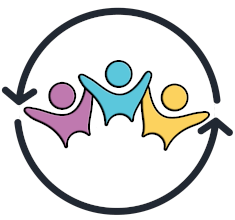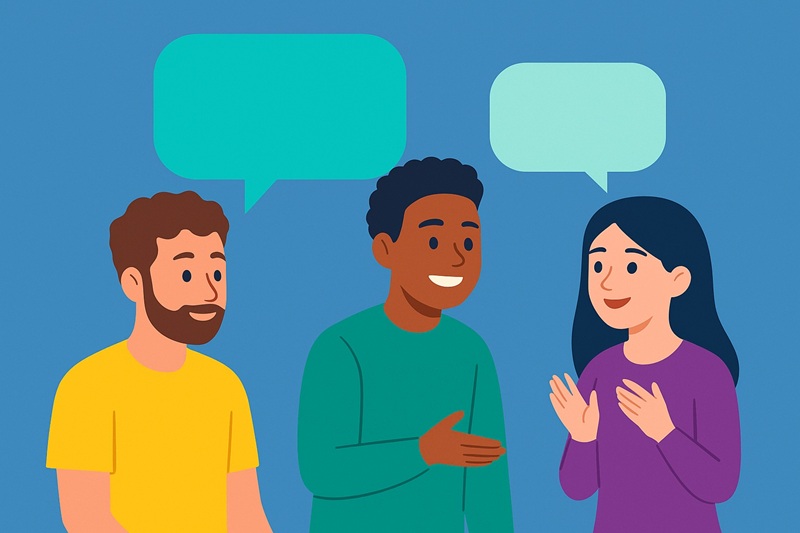For many individuals, especially those with autism or other neurodiverse profiles, the job interview can feel like navigating a foreign land without a map. You might have the perfect qualifications, a stellar resume, and all the right answers prepared, but still struggle to connect with interviewers in a way that truly showcases your potential. Why? Often, it comes down to the unspoken language of the interview—the non-verbal cues and the subtle social flow that are rarely taught but are profoundly important.
At Capability Connections, we understand that excelling in an interview is about more than just what you say. It’s about how you say it, how you present yourself, and how you engage in the unique social dance of a professional conversation. We empower individuals to master these nuanced skills, transforming interview anxiety into interview confidence.
This post will break down the critical non-verbal elements and social dynamics of a job interview and explain how developing these skills can unlock your career opportunities.
The Unspoken Script: Non-Verbal Cues in an Interview
Imagine an interview as a performance where only a fraction of the script is spoken aloud. The rest is communicated through gestures, expressions, posture, and even the way you enter a room. For many, these cues are intuitive, but for those who find social interaction challenging, they can be invisible barriers.
Let’s decode some of the most crucial non-verbal cues:
1. The Power of Eye Contact
The Challenge: For individuals with autism, direct eye contact can be uncomfortable, overwhelming, or even painful. However, in many professional settings, a lack of eye contact can be misinterpreted as disinterest, evasiveness, or even untrustworthiness.
The Strategy: The goal isn’t necessarily constant, intense eye contact. It’s about “friendly engagement.”
- The “T-Zone” technique: Instead of directly looking into the eyes, aim to look at the area between the eyebrows or at the bridge of the nose. To the interviewer, this often appears as direct eye contact.
- Break and Re-engage: Maintain eye contact for a few seconds, then briefly look away (e.g., at the interviewer’s hands, a notebook, or just slightly off to the side) before re-engaging. This mimics natural conversation flow.
- Listen More, Gaze Less: During periods when the interviewer is speaking, focus on listening intently rather than worrying about eye contact. When you respond, re-establish it.
2. The Handshake: A First (and Last) Impression
The Challenge: A handshake can feel awkward or unnatural. Issues might include too-light pressure, too-strong pressure, or prolonged shaking.
The Strategy: Practice makes perfect.
- Firm, Not Crushing: Aim for a firm, confident grip—enough to feel connected, but not so much that it causes discomfort.
- Eye Contact & Smile: Pair the handshake with brief eye contact and a genuine smile.
- Brief Duration: A handshake should typically last about 2-3 seconds, accompanying a greeting (“Nice to meet you”) or a farewell (“Thank you for your time”).
3. Posture and Body Language: Signaling Confidence
The Challenge: Slouching, fidgeting, or crossing arms can send unintended messages of disinterest, defensiveness, or nervousness.
The Strategy: Project an open, engaged demeanor.
- Sit Up Straight: Maintain an upright posture, leaning slightly forward to show engagement.
- Open Gestures: Keep your arms uncrossed. Use open hand gestures occasionally to emphasize points, but avoid excessive fidgeting (e.g., tapping feet, twirling hair).
- Strategic Hand Placement: If you’re prone to fidgeting, try resting your hands lightly on your lap or on the table in front of you (if appropriate).
4. Facial Expressions: The Window to Engagement
The Challenge: Sometimes, a neutral or serious facial expression can be misinterpreted, even if you are deeply engaged internally.
The Strategy: Practice appropriate expressions.
- Subtle Smiling: A light, genuine smile during greetings and at appropriate moments can signal warmth and approachability.
- Nodding: Small, subtle nods when the interviewer is speaking show that you are listening and understanding.
- Mirroring (Subtly): If the interviewer smiles, a slight reciprocal smile can foster rapport.
Mastering the Social Flow: Dynamics of Professional Conversation
Beyond individual non-verbal cues, an interview also involves navigating the rhythm and unspoken rules of social interaction.
1. Active Listening and Thoughtful Responses
The Challenge: Over-eagerness to share information, interrupting, or needing extra processing time can disrupt the flow.
The Strategy: Listen to understand, not just to reply.
- Pause Before Answering: It’s perfectly fine, and often beneficial, to take a breath or a moment to organize your thoughts before answering. This shows thoughtfulness.
- Clarify if Needed: If a question is unclear, politely ask for clarification. “Could you elaborate on that, please?” or “Just to make sure I understand, are you asking about X or Y?”
- Avoid Monologuing: While sharing your skills is important, ensure your answers are concise and directly address the question before offering additional relevant information.
2. Knowing When to Speak (and When Not To)
The Challenge: Identifying natural pauses for contribution versus accidental silences can be tricky.
The Strategy: Observe and practice.
- The “Turn-Taking” Cue: Look for visual cues like the interviewer finishing their sentence, making eye contact with you, or leaning back slightly—these often signal your turn to speak.
- Avoid Interrupting: If you accidentally interrupt, a quick “Excuse me, please go on” is always appropriate.
- Strategic Questions: Prepare 2-3 thoughtful questions to ask the interviewer at the end. This shows engagement and genuine interest.
3. Building Rapport (Without Being Too Personal)
The Challenge: The line between professional and overly personal can be blurry.
The Strategy: Focus on professional common ground.
- Company Knowledge: Referencing something specific you admire about the company or a recent project shows you’ve done your homework.
- Shared Professional Interests: If the interviewer mentions a project or skill, you also have, you can briefly express your enthusiasm.
- Positive Demeanor: A generally positive, enthusiastic, and respectful attitude goes a long way.
How Capability Connections Can Help You Master the Interview
Understanding these nuances is the first step; practicing them is where true mastery begins. This is precisely where Capability Connections excels.
Our programs are designed to:
- Deconstruct Social Cues: We explicitly teach and break down the “unspoken rules” of social interactions, including those specific to interviews.
- Provide Safe Practice Environments: Through role-playing and mock interviews with experienced coaches, you can practice handshakes, eye contact techniques, and conversational flow in a low-pressure setting.
- Offer Personalized Feedback: Our coaches provide constructive, tailored feedback on your non-verbal communication, body language, and interview responses, helping you identify areas for improvement.
- Build Confidence: By repeatedly practicing and succeeding in these simulated environments, you build the confidence necessary to shine when it matters most.
- Develop Self-Advocacy Skills: We also equip you with the skills to effectively communicate your strengths and, if appropriate, discuss potential accommodations in a professional manner.
Don’t let the subtle social dynamics of an interview prevent you from landing your dream job. Your unique perspective and skills are valuable assets, and with the right tools and practice, you can confidently navigate any professional setting.
Ready to transform your interview approach and unlock your career potential? Contact Capability Connections today to learn more about our coaching and programs designed for professional success.



